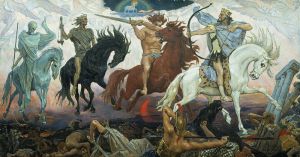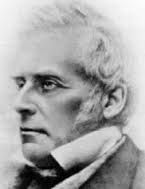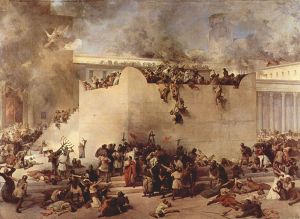
The Psychology of Conspiracy
From 9/11 Truthers to Obama Birthers, it is a source of wonderment that so many people choose to believe conspiracy theories that have little basis in fact. An insightful New York Times article of 21 May 2013 by Maggie Koerth-Baker delves into the question. Psychologists, she notes, trace a believer’s acceptance of a conspiracy theory to an overarching worldview. A 2010 study published in the journal Psychologist discovered the following characteristics among believers:
[They] are more likely to be cynical about the world in general and politics in particular. Conspiracy theories also seem to be more compelling to those with low self-worth, especially with regard to their sense of agency in the world at large. Conspiracy theories appear to be a way of reacting to uncertainty and powerlessness.
Research seems to suggest that people are drawn to conspiracy theories in order to make sense of life’s complexities and to alleviate feelings of helplessness to control events around them. And certainly the internet is now the primary vehicle for the rapid and easy proliferation of conspiracies.
(Read the full New York Times article here.)
It is also plausible that some people are drawn to conspiracy theories in order to invest great tragedies with higher meaning. JFK’s death, the rationale might go, seems all the more senseless when brought about by a troubled loner’s delusions of grandeur. Such an ignominious end for an inspiring young leader strikes many with a sense of cognitive dissonance. Surely the fates could not be so arbitrary and cruel. Maybe a grand conspiracy will somehow help it all make sense? Submitted for your approval (a la Rod Serling): see the mafia dons, rogue CIA agents, shadowy figures on the grassy knoll, perhaps even Vice-President Johnson, all conspiring to assassinate President Kennedy. With the added element of these diabolical machinations, JFK’s death takes on a greater sense of martyrdom.
Consider also that conspiracy theories exist for the assassination of other popular leaders including Abraham Lincoln, Martin Luther King, Jr., Robert Kennedy, and Malcolm X. Of course it does not help to quell the imagination of conspiracy buffs when members of our government actually have participated in nefarious plots: the CIA-backed coups in Iran (1953) and South Vietnam (1963) along with the Watergate conspiracy (1972) and the Iraq WMD conspiracy (2003) spring to mind.
Anti-Semitism and Anti-Catholicism
Religion has often provided fertile ground for the growth of conspiracy theories, especially where it intersects with politics. The long history of anti-Semitism may be attributed in part to a belief that stretches back to the early Middle Ages (some scholars argue to the New Testament itself) in which the crucifixion of Jesus was thought to be a Jewish-led conspiracy. From this arose the vile epithet directed towards Jews: “Christ killer!” In a second example, many Protestants going back to Martin Luther, who was also an ardent anti-Semite, have been convinced that the pope was the Antichrist. In American history the founding of the nativist American Party or “Know Nothings” in 1850 was fueled by hatred of Roman Catholic immigrants and paranoid fears of interference by the Vatican in the U.S. government. Its members swore an oath not to vote for any Roman Catholic. By 1854 the party had grown to over one million members. The bigotry was based in large part on fears that the Catholic faith would spread throughout the nation.
The Know Nothings collapsed during the Civil War but anti-Catholic paranoia continued with the formation of the American Protective Association in 1887. By 1896 it claimed 2.5 million members with chapters in every state. New members swore an oath that included a denunciation of the pope and a vow not to employ a Catholic if a Protestant was available. In 1893 APA leadership propagated a conspiracy theory by forging a papal encyclical entitled “Instructions to Catholics.” It called for them to stage an armed takeover of the U.S. government, and to exterminate all heretics, meaning non-Catholics. The APA disappeared by 1911, but paranoia about Roman Catholics persisted in the WASPish corridors of American power right up to the presidential campaign of JFK in 1960.
Premillennial Dispensationalism

Perhaps there are no better examples of conspiracy theories than those spawned by literal interpretations of religious apocalyptic literature such as the Book of Revelation. The cottage industry of Christian books on biblical prophecy certainly dwarfs that of JFK conspiracies. In the modern era, the dominant figure to emerge in the field of eschatology or biblical prophecy was the British theologian John Nelson Darby (1800-1882). His peculiar brand of systematic theology is known as premillennial dispensationalism and dates from the mid-19th century. In the 20th century it became the dominant position among American evangelicals, primarily through the influence of C.I. Schofield’s 1909 Schofield Reference Bible. Other popularizers of dispensationalism in America include Billy Graham, Hal Lindsay, and Tim LaHaye, primarily through his hugely popular Left Behind series co-authored by Jerry B. Jenkins. Dispensationalists rally around a core set of beliefs: The second coming prior to a literal millennium; a continued prophetic role for the Jews and, since the 1940s, the modern state of Israel; a literal Antichrist, pre-tribulation rapture and seven-year tribulation period; the Battle of Armageddon, final judgment, and a new heaven and earth.
Dispensationalists are driven by an essential paranoia that Satan and his minions are conspiring through secular forces to establish a one-world government. Since the demise of communism, dispensationalists have targeted secular education and media, the United Nations, and the U.S. government—when under a Democratic president—as Satan’s primary instruments for bringing the Antichrist to power. It is a conspiracy theory of cosmic and biblical proportions. Within this worldview, complex geopolitical events, especially those surrounding the state of Israel, are made more comprehensible, if no less frightening, in the context of an end-times plot leading up to the second coming of Christ.
An extreme pessimism pervades dispensational eschatology, with events on earth predicted to grow increasingly dire as the end draws near. Thus, otherwise senseless acts of war and terror—or violations of Palestinian human rights—may be interpreted as part of a divine plan. While this may provide some consolation for true believers, the inherent danger in this view is that American foreign policy may be, indeed has been, influenced by leaders who make decisions based on a dubious interpretation of the Bible rather than through rational thought. Additionally, in its more extreme manifestations, apocalyptic theology easily degenerates into cultish behavior such as that practiced by 20th century autocratic ministers Jim Jones and David Koresh.
The Influence of Apocalyptic Literature

It is important to note that contemporary dispensationalists are not alone in possessing an apocalyptic worldview. Similar theologies exist today among Muslims and other world religions. It is also crucial to understand that many theologians and scholars of ancient literature contend that apocalyptic writings were not intended to be interpreted literally. Nevertheless, throughout history people have read them literally and millennialism has frequently taken root among those who have been marginalized in society or suffered under foreign invasion. For example, the Old Testament books of Ezekiel and Daniel contain millennial and apocalyptic themes and date from periods when the Jews faced national extinction, while the book of Revelation and the Dead Sea Scrolls, which also contain apocalyptic themes, sprang from a period of persecution by the Romans.
Under Roman domination apocalyptic literature abounded in the Jewish tradition between the second century BCE and third century CE. Moreover, in his landmark study, The Pursuit of the Millennium (1957), Norman Cohn established that although millennialism had been condemned early on by the Orthodox and Catholic Churches, it remained constant during the Middle Ages on the margins of society. Sects of this type, Cohn demonstrated, came in a wide variety ranging from violent aggressiveness to mild pacifism and from the most ethereal spirituality to the most earthbound materialism. Most expressions of millennialism both past and present are counter-cultural and many are heavily influenced by the conspiratorial nature of apocalyptic writings.
It would seem as though conspiracy theories are most attractive to those who feel downtrodden and oppressed or who reject the dominant culture for political and religious reasons. All are born of some degree of mistrust and feelings of helplessness. A few are actually true. In most cases, however, they are the result of ignorance and paranoia. But as someone once quipped, “just because you’re paranoid doesn’t mean they’re not out to get you!”
For more on apocalyptic movements and literature visit the Frontline site on PBS.
Always wondered why some people have a thing against the UN…